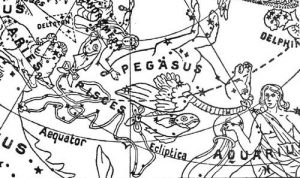Motional Strength
Swift or Slow In Motion
A matter that is often overlooked by many students is the actual rate of longitudinal motion of any planet. The daily rate of zodiacal progression varies within certain limits and consequently when the motion is slow the application and resolution of aspects are more protracted and likely to occasion a greater degree of disturbance or restriction.
The Mean or average daily motion of the various planets is shown in the following table:
TABLE OF PLANETARY MEAN MOTIONS
Sun 59’08″…….. Venus 1°12’………..Saturn 2’00”
Moon 13°10’…….. Mars 33’28″……. Uranus 0’42”
Mercury 1°23’………. Jupiter 4’59″…… Neptune 0’22”
Planetary Motion is “Fast” or “Slow” as it exceeds or falls short of this Mean. (*)
A planet Fast in motion will bring the events, capabilities and opportunities ruled to pass at a comparatively early date. A planet Slow in motion externalizes its qualities slowly and gradually.
RETROGRADE MOTION
There are times when certain planets apparently move backwards through the zodiac due to the relative motion of the Earth. Such a planet is termed “Retrograde.”
STATIONARY IN LONGITUDE
There are also times when a planet turns Retrograde after being Direct in motion and times when a planet turns Direct after being Retrograde when for several days it appears to have no zodiacal motion. Such a planet is called “Stationary.”
In erecting a chart the abbreviations R or Sta. Should be written after such a planet.
Astrologers are much divided in their opinions on the effect of Retrograde and Stationary positions, and it is not always so easy to determine the actual variation from the normal expression of influence. Retrograde motion, although only an apparent phenomenon, may yet produce some amount of disorganization even if only because a planet retrograde is then nearest the Earth. It may be accepted, however, that a planet:
Retrograde. Indicates that the qualities, abilities and events signified by it have the utmost difficulty in expressing themselves externally. All the qualities signified by the planet and its aspects are present, but are repressed and hindered in their expression, tending to feelings and desires for action that dam themselves up within. A retrograde planet signifies there is an impediment to expression, and as such is an affliction.
Stationary. Indicates constancy and duration of effects; planets therefore, have the sphere of their influence enlarged accordingly as their intrinsic nature warrants; i.e., benefic or malefic. A stationary planet indicates that the qualities, abilities or events signified by it are factors of great permanence and unyielding influence, altered only by extraordinary efforts or conditions. The good or evil indicated is very enduring.
In Astro-Meteorology, for the purpose of forecasting the weather, planetary influence is divided into (A) influence by aspect, and (B) influence by position. The aspects employed are the same as those used in Natal Astrology; but the planetary positions that are considered to influence the weather are as follows:
1. ON the EQUATOR, when a planet has 0° declination.
2. IN the TROPICS, when a planet is entering the first degree of Cancer or Capricorn.
3. IN EXTREME DECLINATION, when a planet has reached its maximum declination, whether North or South, and after becoming stationary in declination, moves in the opposite direction.
4. STATIONARY in LONGITUDE, when a planet is not moving either forward or backward in the Zodiac.
It is quite certain that these four positions have considerable effect and cannot safely be omitted from this branch of the starry science. Five additional positions have been suggested theoretically as deserving notice although it is admitted that much further observation is necessary before definite conclusions can be reached as to their possible bearing upon the weather. They are:
5. ANY STATIONARY POSITION IN DECLINATION
6. ANY STATIONARY POSITION IN LATITUDE
7. POSITION OF 0° LATITUDE
8. POINT OF PERIHELION
9. POINT OF PERIGREE
Returning to the first four positions listed; if these positions have effect in astro-meteorology the conclusion is irresistible that they must also be important in natal astrology – both in the radical chart and by progression. If the heavenly bodies influence the atmosphere in some way and so produce weather changes, they must also influence the solids and liquids of the globe, including those that enter into the composition of man’s body, and through his body they will influence the man himself.
Position #4 – “Stationary in Longitude” – is, as we have seen in the first section of these notes, used in natal astrology, and the importance of its influence is beyond dispute.
It would appear however, that little or no attention is paid by writers either ancient or modern to the other positions mentioned, and owing to the difficulty of locating a sufficient number of charts for research work, we are not at this time able to reach any definite conclusions, although it seems probable that certain of them should be classified as positions of strength or weakness, while others may be more decidedly fortunate or unfortunate.
(*) NOTE: As the current daily motion of each planet is computed in erecting the chart it takes but a moment to determine if a planet be Fast or Slow and to what extent.

